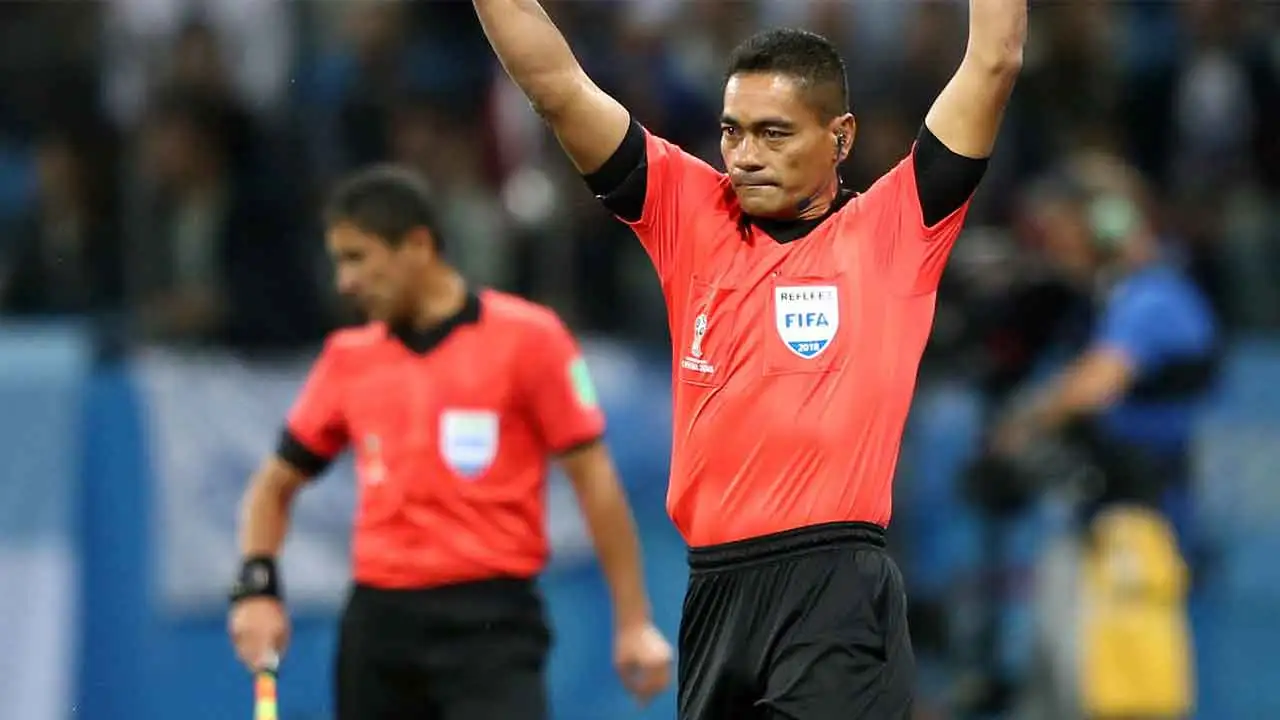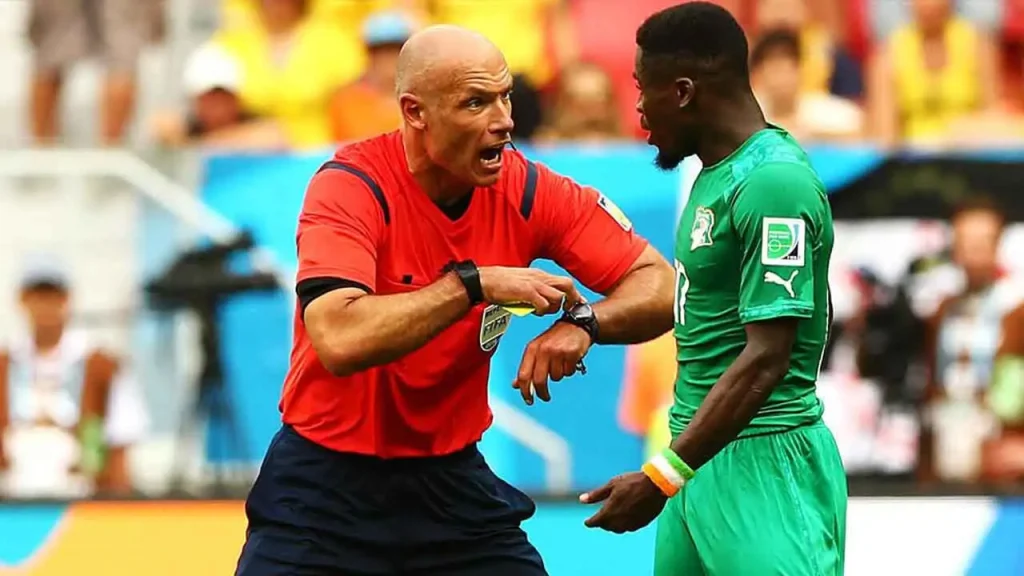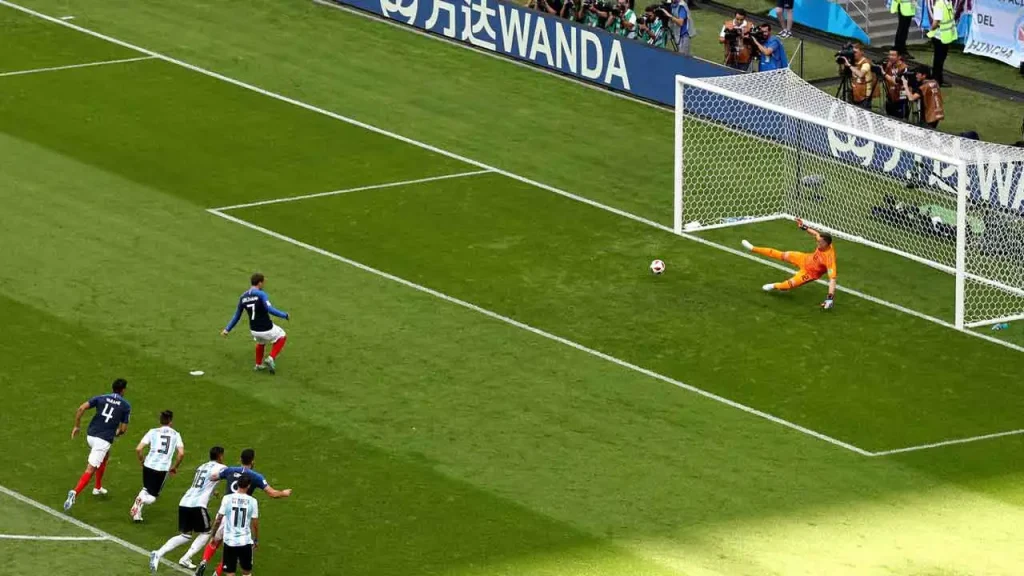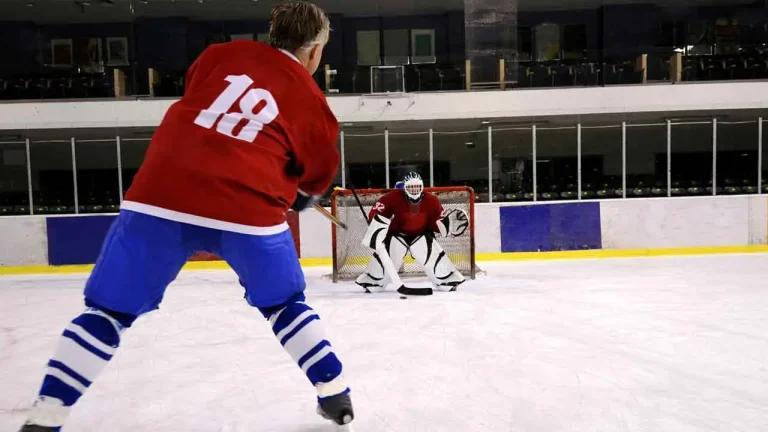What Does FT Mean in Soccer? How Many Minutes in Full-Time and Half Periods?

What Does FT Mean In Soccer? A Brief Explanation About Full Time, Half Time, and Key Points.
Are you a soccer enthusiast who’s constantly puzzled by the mysterious term “FT”? Have you ever wondered what it means when someone says, “The match ended FT”? Well, fret no more! In this blog post, we’re going to unravel the mystery behind those 2 little letters and explain everything you need to know about what “FT” means in soccer.
What does FT mean in Soccer? Get ready to dive into the exciting world of full-time and discover how it influences match outcomes, tactical decisions, and even betting strategies. So grab your jersey and let’s kick off this thrilling journey together!
What Does FT Mean In Soccer?
Full-time (FT) in soccer refers to the end of a regulation match when the designated playing time has been completed. It is the moment when players and fans alike eagerly await the final whistle, signaling that all 90 minutes (or more) of intense gameplay have come to an end.
Duration-wise, full-time typically consists of 2 halves, each lasting 45 minutes. However, it’s important to note that this can vary based on different competitions or league regulations. Some matches may have shorter durations for each half or additional time added due to stoppages or injury breaks.

In a soccer game, there are 3 types of time: actual playtime when the ball is in motion, stoppage time for interruptions such as injuries or substitutions, and halftime break where players get a chance to catch their breath and strategize with their coaches. When does full time actually end? Well, it’s straightforward – full-time occurs once both halves plus any extra injury or stoppage time allocated by the referee have been played. At this point, all eyes turn towards potential overtime if required.
Speaking of overtime or extra time as some call it – let’s delve into its role within full-time management. Overtime typically comes into play when a match ends in a draw and must be decided by further gameplay. This additional period allows teams extra opportunity to break the stalemate before resorting to penalty shootouts.
The role of referees during full-time management can’t be understated; they are responsible for keeping accurate track of game duration and enforcing rules regarding stoppages and injury times. Referees determine how much additional stoppage/injury time should be added at their discretion based on various factors such as goal celebrations or excessive fouling which disrupts continuous play.
One crucial aspect related to full-time is player substitutions. Teams strategically utilize these opportunities during regulated intervals like half-time but also take advantage during injury/stoppage periods where substitution options become available. These tactical changes can significantly impact the flow and dynamics of a match,
Key Points
Full Time in Soccer: The Basics Strategies
In soccer, Full Time (FT) refers to the end of a regular game. It signifies that the allotted time for the match has been played. But what exactly does it entail? Stay tuned as we delve deeper into how full-time affects match outcomes and other intriguing aspects related to FT in soccer!
Duration of Full Time
In soccer, the duration of full-time refers to the standard length of a match. Typically, a game consists of two halves, each lasting 45 minutes. This means that the total duration for full-time is 90 minutes. However, it’s important to note that this is just the regular playing time and does not include any additional stoppage or injury time.
The decision to have matches last for 90 minutes has been a longstanding tradition in soccer. It provides an optimal balance between giving teams enough time to compete while also keeping the game from dragging on excessively.
Throughout those 90 minutes, players give their all on the field, utilizing their skills and strategies to outplay their opponents and score goals. The clock keeps ticking relentlessly until the referee blows his whistle signaling the end of full time.
It’s worth mentioning that there are variations in playing times across different levels of soccer and competitions. For example, youth games may have shorter durations such as 30 or 40 minutes per half. Understanding the duration of full-time play helps fans appreciate how much action can take place within those intense 90-minute battles on the pitch!
When Does Full-Time End?
Full-time in soccer is the culmination of the game, but when exactly does it end? The answer lies in the duration and stoppage time. A regulation soccer match typically lasts for 90 minutes, divided into two halves of 45 minutes each. However, this doesn’t account for additional time added by the referee to compensate for interruptions during play.
Stoppage time is commonly referred to as injury or added time and makes up for delays caused by injuries, substitutions, or other disruptions on the field. The referee determines how much stoppage time will be added at their discretion based on factors such as goals scored, penalties awarded, and overall game flow.

Once the full 90 minutes plus stoppage time has elapsed, that’s when full-time officially ends. This means that all play must cease immediately after this point. So keep an eye on that clock as you watch a thrilling soccer match unfold because once full-time arrives, there’s no turning back!
Extra Time
Extra time is a thrilling and intense period that occurs in soccer matches when the score remains tied at the end of regulation time. It’s an opportunity for teams to break the deadlock and secure victory before resorting to penalty shootouts.
The duration of extra time varies depending on the competition, but it usually consists of two 15-minute halves. During this period, teams have another chance to score goals and determine the winner. However, if both teams are still level after extra time, then a penalty shootout will decide the outcome.
Extra time brings added pressure and excitement as players battle fatigue while pushing themselves to their limits. Coaches strategize how best to utilize substitutions and tactics during this crucial phase of play.s
In some cases, teams may prefer avoiding extra time altogether by scoring in regular time or employing defensive tactics near the end of a match with hopes of securing victory without going into additional minutes. Extra time adds another layer of drama and intensity to soccer matches as players fight tooth and nail for victory within those precious moments beyond the full-time whistle.
Technicalities
Technicalities in soccer refer to specific rules and regulations that govern the game. These can sometimes lead to confusion or controversy among players, coaches, and fans. One such technicality is the concept of full-time (FT). In soccer, full-time signifies the end of regular play and determines the outcome of a match.
Full time is reached once both halves have been completed along with any additional time indicated by the referee’s decisions. It is important to note that full-time doesn’t include extra time or penalty shootouts if they are required for certain competitions.
Understanding these technicalities can influence team strategies during gameplay. Coaches must carefully manage player substitutions and tactical approaches based on how much time remains until full-time. While technicalities in soccer may seem intricate and complex at times, they play an essential role in ensuring fair play and determining accurate outcomes for matches.
Full Time in Betting
When it comes to soccer betting, understanding the concept of Full Time (FT) is crucial. In simple terms, FT refers to the completion of 90 minutes of regular play, plus any additional time added by the referee. This is when all bets on the outcome of a match are settled.
For bettors, Full Time offers a clear-cut resolution. Your bet will be determined based on the final result at full-time, whether you placed a wager on which team would win or if the game would end in a draw.
It’s important to note that extra time and penalty shootouts don’t typically affect betting outcomes unless specifically stated by the bookmaker. So even if a match goes into overtime or penalties, your bet will still be resolved based on what happened during regular full-time play.
In soccer betting, Full Time provides certainty and closure for both players and fans alike. It’s an essential component of wagering strategies and allows for accurate assessment of results without unnecessary ambiguity. So next time you place a bet on a soccer match, keep an eye out for that magical moment when the time arrives – it’s when all bets are settled!
Role of Referee in Full-Time Management
The role of the referee in managing full-time in a soccer game is crucial. The referee acts as the timekeeper and ensures that the match adheres to the allotted duration. Throughout the game, it is their responsibility to keep track of time accurately.
The referee uses a stopwatch or a similar device to monitor the elapsed minutes and seconds. They signal when each half begins and ends, making sure that both teams have played for an equal amount of time. In addition, they also oversee any additional periods such as extra time or penalty shootouts.
The role of the referee becomes even more critical during tense moments at the end of a match when one team desperately tries to score while another defends their lead. The referee must manage these situations carefully by allowing play to continue without unnecessary interruptions while still keeping track of elapsed and added minutes accurately.
Without proper management from referees during full-time play, soccer games would lack structure and fairness. Their attention to detail and ability to make real-time decisions regarding stoppage time contribute significantly toward maintaining an exciting yet fair sporting environment for all players involved.
Keeping Game Time
One crucial aspect of soccer is keeping track of game time. In a sport where every second counts, accurate timekeeping is essential to ensure fairness and maintain the integrity of the game. The responsibility for keeping game time lies with the referee. Armed with a stopwatch or an electronic device, the referee starts and stops the clock as necessary throughout the match.
To prevent any potential discrepancies or disputes, it is common for referees to consult with their assistant referees regarding stoppage time or injury-related delays. This collaborative approach helps maintain consistency in timekeeping decisions.
In addition to tracking regular playing time, referees also manage additional periods such as extra time and penalty shootouts if applicable. Their role becomes even more critical during these moments when precision timing can have a significant impact on match outcomes. Effective management of game time by the referee ensures that matches run smoothly and fairly while upholding the spirit of competition within soccer’s rules and regulations.
Injury Time
Injury Time, also known as stoppage time or added time, is a crucial aspect of soccer that can often lead to unexpected twists and turns in a match. This additional period is given at the end of each half to compensate for any time lost due to injuries, substitutions, or other interruptions during regular play. During Injury Time, players have the opportunity to make one final push towards victory or salvage a draw.
The duration of injury time is determined by the referee based on their assessment of how much time was wasted throughout the game. These few extra minutes can sometimes be a lifeline for trailing teams who are eager for an equalizer or even a winning goal. Coaches and players must be strategic during this period and may choose to make tactical substitutions or change their gameplay approach altogether. It’s a high-pressure situation where every second counts and any mistake could prove costly.

Injury Time has been responsible for some unforgettable moments in soccer history – last-minute goals that turned defeat into victory, and dramatic comebacks from seemingly impossible positions. It adds an element of unpredictability that keeps fans on the edge of their seats until the very last moment.
Draw Decisions
In soccer, a draw occurs when both teams score an equal number of goals during the full time of the match. While some fans may find this result disappointing, draws are a common occurrence in the sport and can have significant implications for team standings and tournament outcomes.
When a match ends in a draw, it means that neither team was able to secure a victory within the allocated game time. This could be due to various factors such as strong defensive play from both sides or missed scoring opportunities. Regardless of the reasons behind it, a draw is considered a fair outcome as it reflects each team’s performance on the field.
In league competitions, teams earn points based on their results at full-time. A win typically awards 3 points to the victorious team while a draw grants each team 1 point. These points contribute to determining league positions and can ultimately impact which teams qualify for international tournaments or face relegation.
Draw decisions also come into play during knockout stages of tournaments where there must be one clear winner to advance. In these cases, extra time or even penalty shootouts may be used as tiebreakers if necessary. While draws may not always provide decisive outcomes, they do add excitement and unpredictability to soccer matches.
So next time you watch your favorite soccer team battle it out on the field, remember that even though draws might not produce immediate winners or losers, they still play an integral role in shaping competition dynamics and sparking discussions among fans worldwide!
Penalty Shootouts
Penalty shootouts, also known as the ultimate decider in soccer, are a thrilling and nerve-wracking event that occurs when a match ends in a draw during regulation time and extra time. This high-stakes moment is where players showcase their precision and composure under immense pressure.
The rules of penalty shootouts are simple yet intense. Each team takes turns sending one player to face the goalkeeper from 12 yards away. The objective is to score while the opposing goalkeeper tries to make a crucial save. It’s an exhilarating battle between the shooter and the shot-stopper. The tension builds with each kick as fans hold their breath, hoping for victory or dreading defeat. Penalty shootouts test not only the technical ability of players but also their mental strength and decision-making skills.

Goalkeepers become heroes if they manage to save penalties, while scorers bask in glory if they successfully find the back of the net. But one mistake can change everything; it all comes down to split-second reactions and calculated moves. Penalty shootouts have seen some unforgettable moments throughout soccer history – tears of joy, heartbreaks, unexpected heroics, and unimaginable misses.
Effects on Technical Decisions
Technical decisions play a crucial role in soccer matches, and the concept of full-time (FT) can have a significant impact on these decisions. When a game is nearing its end, coaches and players must consider various factors before making tactical choices.
One effect of approaching full-time is the need to assess the scoreline. If a team is leading by a comfortable margin, they may opt to make defensive substitutions or adopt a more conservative approach to preserve their advantage. On the other hand, if a team is trailing, they may decide to introduce attacking players or change their formation in an attempt to equalize or secure victory.
Another factor influenced by full-time is fatigue. As matches progress toward the end, players’ energy levels may decline, affecting their decision-making abilities and physical performance. Coaches must take into account this potential drop in intensity when considering technical decisions such as player substitutions or tactical adjustments.
Additionally, injuries can occur during games that extend beyond regular playing time. A player who sustains an injury close to full-time might require immediate medical attention and substitution. The severity of the injury could also influence subsequent technical decisions made by both teams.
Referees have an essential role in managing technical decisions around full-time scenarios. They are responsible for keeping track of added injury or stoppage time and ensuring fair play throughout the match’s duration. Their judgments can significantly impact how teams approach strategic choices based on available playing minutes.
Player Substitutions
One important aspect of full-time in soccer is player substitutions. Throughout the game, teams have the opportunity to make changes to their lineup by substituting players on and off the field. This allows coaches to adapt their strategies, bring fresh legs onto the pitch, or address any injuries or fatigue.
Player substitutions can have a significant impact on the flow and outcome of a match. A well-timed substitution can inject new energy into a team, provide a tactical advantage, or even turn things around when trailing behind. On the other hand, poor or untimely substitutions may disrupt team chemistry and weaken performance.
Coaches carefully consider which players to substitute based on various factors such as playing style, form, fitness levels, and specific match situations. They must analyze how each change will affect their team’s overall strategy and balance. In some cases, player substitutions are strategic moves aimed at preserving leads or managing game time during crucial moments in the match. Coaches may opt for defensive-minded substitutes to strengthen their backline and protect against late equalizers.
It’s worth noting that there are rules governing player substitutions depending on the competition level and governing body. Typically, teams are allowed 3 opportunities for substitution throughout a game (excluding extra time). However, they must adhere to specific guidelines regarding timing and location on the field when making these changes.
Reason of Soccer Games Go Over 90 Minutes
Why do soccer games go over 90 minutes? It’s a question that many fans have pondered while watching their favorite teams battle it out on the pitch. The simple answer is that various factors can cause a game to exceed the standard 90-minute mark.
So next time you find yourself watching a soccer game that goes beyond regulation playtime, remember that there are several reasons why this might occur – from injuries and tactical maneuvers to unpredictable elements outside of anyone’s control. Soccer truly is an unpredictable sport where every minute counts!
The Golden Goal – How become Bring Extra Time Experiment
One interesting experiment that was introduced in soccer to add more excitement and intensity to matches is the concept of the golden goal. This rule was implemented during certain tournaments, including the UEFA Euro Championship.
The idea behind the golden goal rule was simple: if a team scored a goal during extra time, the game would immediately end, and that team would be declared the winner. This meant that there wouldn’t be any need for penalty shootouts or lengthy periods of play. The intention behind this experiment was to encourage teams to attack and take risks during extra time, as scoring a decisive goal could secure victory without having to rely on penalties. It also added an element of sudden death drama, where every moment became crucial.
However, despite its initial popularity, the golden goal rule eventually fell out of favor due to various reasons. Critics argued that it placed too much emphasis on luck rather than skill since one mistake or lucky break could determine the outcome of a match. Additionally, some believed it created defensive-minded strategies with teams being cautious not to concede instead of actively seeking goals.
FIFA decided to abandon the golden goal rule in 2004 and replaced it with what is now known as the “silver goal.” However, even this concept didn’t gain widespread acceptance and has been discontinued altogether in recent years. While no longer used today, the golden goal experiment remains an intriguing part of soccer’s history—showcasing how rules can evolve in pursuit of creating better gameplay experiences for both players and fans alike!
How Long is the Break Between Full-Time and Extra Time in Soccer?
How long is the break between full-time and extra time in soccer? This is a question that often arises among soccer fans. Well, the duration of this break can vary depending on different factors. Typically, the break between full-time and extra time in soccer lasts for about 15 minutes. During this time, players have a chance to catch their breath, receive instructions from their coaches, and mentally prepare themselves for the additional period of play.
However, it’s important to note that the exact duration of the break may be influenced by various factors such as weather conditions or any other unforeseen circumstances. In some cases, if there are delays or incidents during regular playing time, it could result in a shorter break before extra time begins.
The 15-minute interval allows teams to regroup and potentially make tactical changes based on how the game has unfolded so far. Coaches may use this opportunity to motivate their players or provide specific strategies for dealing with certain situations on the field.
While there is no fixed rule regarding how long the break should be between full-time and extra time in soccer matches, it typically spans around 15 minutes. This brief intermission serves as a crucial moment for both teams to reset and refocus before entering into what can often be an intense and decisive period of play.
FAQs
Conclusion
Understanding the concept of what FT means in soccer is crucial for both players and fans alike. It marks the end of the regular playing time and determines the outcome of a match. From duration to technicalities, full-time plays a significant role in shaping the course of a game.
The duration of full-time is typically 90 minutes, divided into two halves of 45 minutes each. However, it’s important to note that soccer games can go beyond this time due to additional minutes known as injury or stoppage time. Referees play a vital role in managing full-time and ensuring fair play. They keep track of game time, including any interruptions or injuries that may occur during regulation play.
Extra time may be added if there is no clear winner after regular playing ends. This period allows teams more opportunity to secure victory before heading into penalty shootouts if necessary. Full-time also influences technical decisions made by coaches and managers. Player substitutions and tactical strategies are often altered based on how much time remains until the final whistle blows.
The break between full-time and extra time provides an opportunity for teams to regroup mentally and physically before facing additional challenges on their path towards success within those extended periods allotted specifically following standard ninety-minute regulations dictated beforehand by FIFA rules & regulations governing professional football matches worldwide today.





